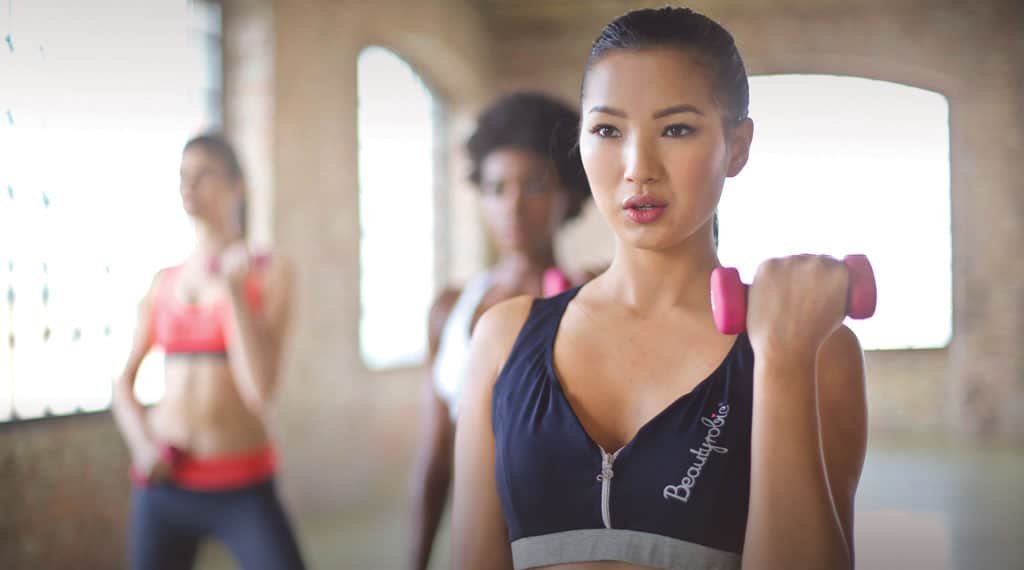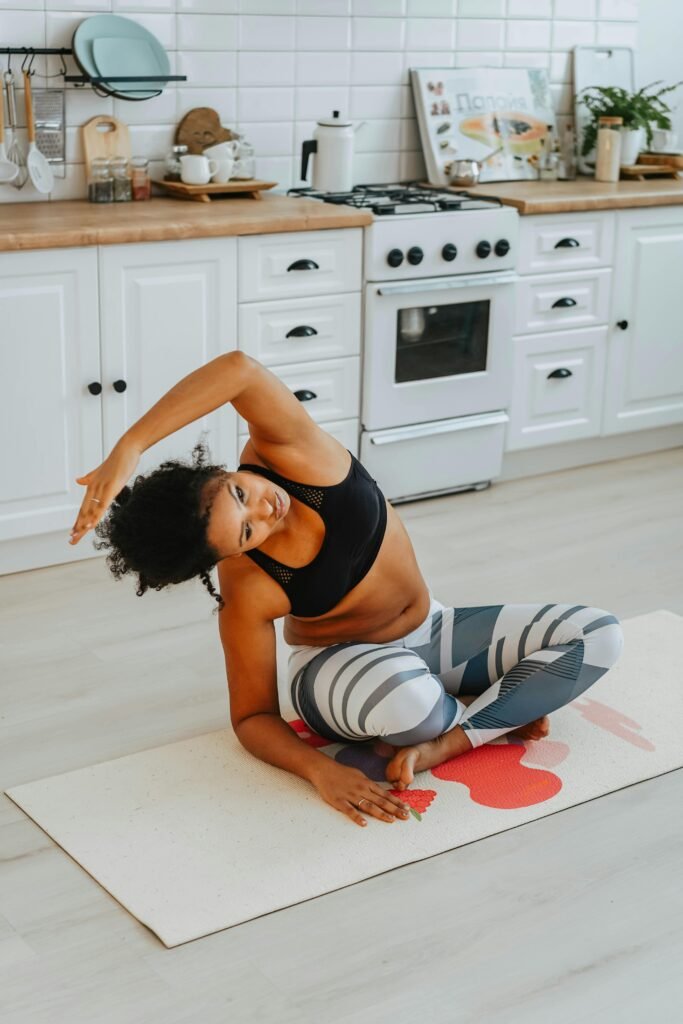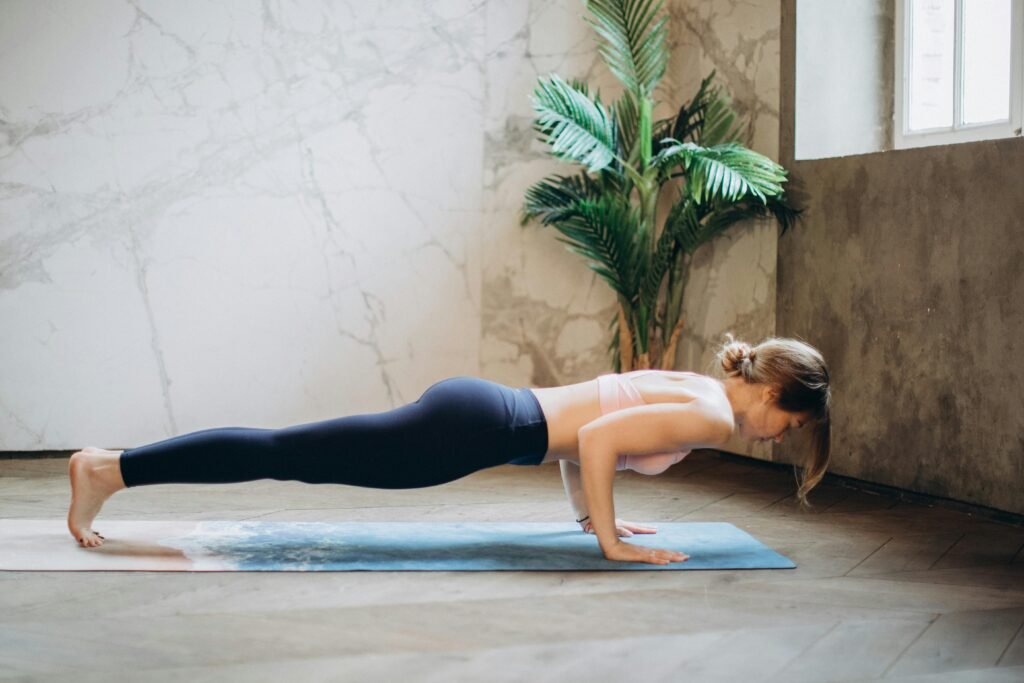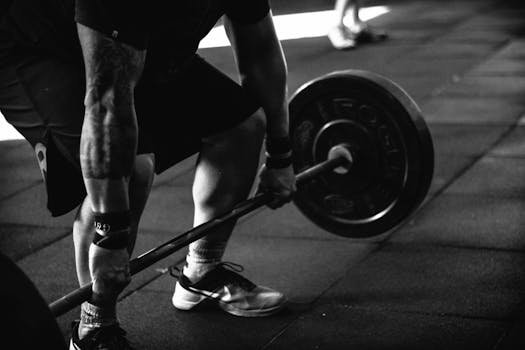The “Exercise as Medicine” mindset marks a vital shift in how we view physical activity. Instead of solely chasing aesthetic goals or a certain body type, this perspective emphasizes the profound internal health benefits derived from regular movement. It champions exercise as a powerful, non-pharmacological intervention for enhancing well-being, recognizing that its true value lies in optimizing our body’s fundamental functions, from cellular health to organ system efficiency, rather than just superficial appearance.
Regular physical activity is a cornerstone of a robust immune system and a potent shield against chronic diseases. Engaging in consistent exercise helps circulate immune cells more effectively, enhancing the body’s ability to detect and combat pathogens. Furthermore, it plays a critical role in preventing and managing conditions like type 2 diabetes, heart disease, certain cancers, and osteoporosis, by improving insulin sensitivity, lowering blood pressure, reducing inflammation, and strengthening bones, thus offering a comprehensive preventative approach to long-term health.
The scientific community continually uncovers compelling evidence supporting exercise’s therapeutic effects across a spectrum of health conditions. From improving mental health disorders like depression and anxiety by stimulating endorphin release and reducing stress hormones, to aiding in rehabilitation after stroke or injury, the data is clear. Exercise is not just a lifestyle choice; it’s a clinically proven tool for disease prevention, symptom management, and overall longevity, underscoring its indispensable role in modern healthcare.

Time-Efficient Fitness Routines for Busy Parents and Caregivers
Maximum Results, Minimum Time
High-intensity interval training (HIIT) is perfect for parents who can only squeeze in 15-20 minute workouts. A simple routine might include 30 seconds of jumping jacks, followed by 30 seconds of bodyweight squats, then 30 seconds of push-ups, with 15-second rest periods between exercises. Repeat this circuit 4-5 times for a complete workout that targets multiple muscle groups and elevates heart rate. The beauty of HIIT is that you can do it anywhere – in your living room while kids nap, in the garage, or even outside while children play nearby.
Compound exercises that work multiple muscle groups simultaneously maximize your workout efficiency. Focus on movements like burpees, mountain climbers, squat-to-press combinations, and plank variations that engage your entire body. A 10-minute routine combining these exercises can be more effective than 30 minutes of isolated movements. Try setting a timer for tabata-style training: 20 seconds of work followed by 10 seconds of rest, cycling through 4 different compound exercises twice for a quick but intense session.
Make fitness part of your daily routine by incorporating “exercise snacks” throughout the day. Do calf raises while brushing teeth, wall push-ups during commercial breaks, or take the stairs two at a time. Park farther away from stores, do squats while waiting for coffee to brew, or turn household chores into mini-workouts by adding lunges while vacuuming or dancing while folding laundry. These small bursts of activity add up and help maintain fitness levels even when dedicated workout time is scarce.




🧠 How Exercise Impacts Your Mental Health
In today’s fast-paced, hyper-connected world, taking care of your mental health has never been more important. While therapy, mindfulness, and medication play key roles in mental well-being, one incredibly powerful — and often underestimated — tool is exercise.
Beyond physical benefits like weight loss, improved cardiovascular health, and muscle tone, regular physical activity can have a profound impact on your mind. Here’s how.
1. Boosts Mood Instantly
Ever heard of a “runner’s high”? That euphoric feeling isn’t a myth. Exercise stimulates the production of endorphins, the brain’s feel-good chemicals that act as natural mood lifters. Even a brisk 20-minute walk can significantly boost your mood.
💡 Fun fact: Exercise also increases dopamine and serotonin — key players in reducing anxiety and depression.
2. Reduces Stress and Anxiety
When you’re stressed, your body releases cortisol, the “stress hormone.” Regular physical activity helps regulate cortisol levels, making it easier to manage everyday stress.
Exercise also provides a mental break. Whether it’s lifting weights, swimming, or dancing, movement distracts your mind from stressors, creating a meditative, calming effect.
3. Improves Sleep Quality
Quality sleep is crucial for mental health. Studies show that people who exercise regularly fall asleep faster and enjoy deeper sleep. Good sleep helps regulate mood, sharpens focus, and improves emotional resilience.
💤 Try: Low-impact exercises like yoga or stretching in the evening to wind down.
4. Boosts Self-Esteem and Confidence
As you stay consistent with exercise, you’ll likely notice positive changes in your body — increased strength, better posture, more energy. These changes naturally lead to greater self-confidence and a more positive self-image.
And it’s not just about appearance — it’s about how strong, capable, and resilient you feel.
5. Protects Against Depression
Numerous studies suggest that exercise can be just as effective as antidepressant medication for some people — especially in cases of mild to moderate depression. It helps by rewiring the brain in positive ways and reducing inflammation, which is linked to depression.
🚴 Pro tip: You don’t need high-intensity workouts. Even walking for 30 minutes a day, 3–5 times a week, can make a difference.
6. Creates Routine and Purpose
When life feels chaotic, exercise provides a sense of structure and achievement. Committing to a workout routine — even a small one — can give you daily purpose, something to look forward to, and a feeling of control.
Final Thoughts
You don’t have to become a gym junkie to feel the mental health benefits of exercise. Start small. Take the stairs, walk your dog, try a yoga video, or dance around your living room. The key is consistency, not perfection.
Your mind and body are deeply connected — and by moving your body, you’re also healing and empowering your mind.
Let’s move toward better mental health, one step at a time.




💪 Bodyweight Exercises You Can Do Anywhere
You don’t need a gym membership or fancy equipment to get fit — your body is the gym. Bodyweight exercises are simple, effective, and completely equipment-free, which makes them perfect for home, travel, or even a quick office workout.
Whether you’re a beginner or getting back into fitness, here’s a list of bodyweight exercises you can do literally anywhere — from your living room to a hotel room to a quiet corner of the park.
1. Squats
Squats target your quads, hamstrings, glutes, and even your core.
How to do it:
- Stand with feet shoulder-width apart
- Lower your body like you’re sitting in a chair
- Keep your chest up and knees behind your toes
- Push through your heels to stand back up
🌀 Make it harder: Add a jump at the top (jump squats)
🧱 2. Push-Ups
Great for building upper-body and core strength.
How to do it:
- Place hands shoulder-width apart on the ground
- Lower your chest toward the floor, elbows at about a 45° angle
- Keep your body in a straight line from head to heels
- Push back up
🌀 Modify it: Do knee push-ups or incline push-ups (hands on a bench or table)
🐛 3. Plank
This one’s a core crusher and full-body stabilizer.
How to do it:
- Rest on your forearms and toes
- Keep your body flat like a board — no sagging hips!
- Hold for 20–60 seconds
🌀 Add variety: Try side planks or plank shoulder taps
🦵 4. Lunges
Great for legs, glutes, balance, and coordination.
How to do it:
- Step one leg forward, lowering your hips until both knees are at 90°
- Push back to standing and switch sides
🌀 Challenge yourself: Try walking lunges or jumping lunges
🧍♂️ 5. Glute Bridges
Perfect for your posterior chain — especially if you sit a lot.
How to do it:
- Lie on your back with knees bent, feet flat
- Lift your hips toward the ceiling, squeezing your glutes
- Lower and repeat
🌀 Level up: Try single-leg bridges for a bigger challenge
🐻 6. Mountain Climbers
A cardio-core combo that also gets your heart rate up.
How to do it:
- Get into a plank position
- Drive one knee toward your chest, then switch quickly
- Keep your core tight and back flat
🌀 Pro tip: Go slow and controlled for core work, fast for cardio
🕺 7. Jumping Jacks
An old-school favorite for full-body warm-ups and cardio.
How to do it:
- Jump legs out while swinging arms overhead
- Jump back to the starting position
- Repeat in a steady rhythm
🌀 Time it: Do 30 seconds on, 10 seconds rest for a quick cardio burst
📋 Sample 10-Minute Anywhere Bodyweight Workout
Do each exercise for 40 seconds, rest for 20 seconds. Repeat 2 rounds:
- Bodyweight Squats
- Push-Ups
- Plank
- Lunges
- Mountain Climbers
🔥 Optional finisher: 1 minute of jumping jacks



The Workout Mistakes We All Make (And How to Fix Them Without Getting Hurt)
Let’s be honest – we’ve all been there. You’re motivated, you’re ready to transform your life, and you dive headfirst into a workout routine with the enthusiasm of someone who just discovered they can actually enjoy exercise. Then, three weeks later, you’re nursing a sore back, frustrated with your lack of progress, or worse, sitting on the couch convinced that maybe you’re just not cut out for this fitness thing.
Here’s the truth: most workout injuries and setbacks aren’t because you’re doing something dramatically wrong. They’re usually the result of small, seemingly innocent mistakes that add up over time. The good news? Once you know what to look for, these mistakes are totally preventable.
The “All or Nothing” Trap
This might be the biggest mistake of all, and it’s one that trips up even the most well-intentioned people. You decide you’re going to work out six days a week, for an hour each time, starting immediately. If you’ve been mostly sedentary, this is like deciding to run a marathon when you haven’t jogged around the block in years.
Why It Backfires Your body needs time to adapt. Muscles, tendons, ligaments, and even bones need gradual progression to get stronger without breaking down. When you go from zero to hero overnight, something’s going to give – usually in the form of an overuse injury or burnout that leaves you back on the couch.
The Fix Start with what feels almost too easy. If you want to eventually work out five days a week, start with two or three. If your goal is hour-long sessions, begin with 20-30 minutes. You can always add more, but it’s much harder to come back from an injury or from the mental defeat of an overly ambitious plan that crashed and burned.
Think of it as building a foundation. You wouldn’t start building the second floor of a house before the first floor was solid, right?
Skipping the Warm-Up (Because Who Has Time?)
We get it. You have 30 minutes to work out, and spending 5-10 minutes on a warm-up feels like you’re wasting precious exercise time. But jumping straight into intense exercise is like trying to stretch a rubber band that’s been sitting in the freezer.
Why It Matters A proper warm-up literally warms up your muscles, increases blood flow, and prepares your nervous system for the work ahead. It’s not just about preventing injury – it actually makes your workout more effective because your body can perform better when it’s properly prepared.
The Fix Your warm-up doesn’t have to be complicated or time-consuming. Five minutes of light movement that gradually increases in intensity is usually enough. This could be:
- Walking or marching in place, gradually picking up the pace
- Gentle arm circles and leg swings
- Light versions of the exercises you’re about to do (like bodyweight squats before weighted squats)
Think of it as easing into your workout rather than diving in. Your body will thank you, and you’ll actually perform better during the main part of your session.
The Form vs. Ego Battle
This one’s tough because it goes against our natural instincts. You see someone else lifting heavier weights, running faster, or doing more advanced moves, and suddenly your perfectly appropriate workout feels inadequate. So you add more weight, pick up the pace, or attempt that advanced exercise variation, even though your form isn’t quite ready for it.
Why Poor Form Is Dangerous When you sacrifice form for intensity, you’re essentially teaching your body incorrect movement patterns while putting stress on the wrong muscles and joints. It’s like trying to build a house with a crooked foundation – eventually, something’s going to collapse.
Poor form is also inefficient. You might think you’re working harder, but you’re often working the wrong muscles or not fully engaging the muscles you’re trying to target.
The Fix Master the basics first. Get really comfortable with proper form using lighter weights or easier variations before progressing. Here are some signs your form might be suffering:
- You can’t complete the full range of motion
- You’re holding your breath throughout the movement
- You feel the exercise in places you shouldn’t (like your lower back during squats)
- You can’t control the weight or movement on the way down
Remember, the person lifting twice as much as you probably spent months or years building up to that weight with proper form. You’re not behind – you’re building your foundation.
Ignoring Your Body’s Signals
Your body is constantly communicating with you, but we’ve gotten really good at ignoring these messages in our “push through the pain” culture. There’s a difference between the discomfort of challenging your muscles and the sharp, shooting, or persistent pain that signals something’s wrong.
Learning the Difference
- Good discomfort: Muscle fatigue, burning sensation in the working muscles, feeling out of breath, general tiredness
- Warning signs: Sharp or shooting pain, pain in joints rather than muscles, pain that gets worse as you continue, pain that doesn’t go away after you stop
The Fix When something doesn’t feel right, pause and assess. Ask yourself:
- Is this normal muscle fatigue or something else?
- Does this pain feel different from usual exercise discomfort?
- Am I able to maintain good form, or am I compensating?
It’s always better to stop early and come back tomorrow than to push through and be sidelined for weeks. There’s no shame in listening to your body – it’s actually a sign of wisdom and maturity in your fitness journey.
The Recovery Rebellion
In our productivity-obsessed culture, rest days can feel lazy or counterproductive. But here’s what many people don’t realize: your muscles don’t actually get stronger during your workout. They get stronger during recovery, when your body repairs and rebuilds the muscle fibers you challenged during exercise.
Why Recovery Matters Without adequate recovery, you’re essentially trying to build on a foundation that’s still under construction. This leads to decreased performance, increased injury risk, and that feeling of being perpetually tired and run-down.
The Fix Plan your rest days just like you plan your workout days. Recovery doesn’t have to mean sitting on the couch all day (though sometimes it should). Active recovery can include:
- Gentle walks
- Light stretching or yoga
- Easy swimming
- Household activities
Listen to your body’s cues. If you’re feeling unusually tired, irritable, or if your performance is declining despite consistent training, you might need more recovery time.
Breathing: The Thing We Forget We Need to Do
It sounds ridiculous, but breath-holding during exercise is incredibly common. When we’re concentrating hard or lifting something heavy, many of us instinctively hold our breath. This deprives your muscles of oxygen and can cause dangerous spikes in blood pressure.
The Fix Make breathing part of your movement pattern. For strength exercises, a general rule is to exhale during the exertion phase and inhale during the relaxation phase. For cardio, focus on rhythmic breathing that matches your movement.
If you find yourself holding your breath, it might be a sign that you’re working at too high an intensity or using too much weight.
The Comparison Game
Social media makes this one particularly challenging. You see someone’s highlight reel – their perfect form, impressive lifts, or scenic running routes – and suddenly your own workout feels inadequate. This leads to pushing too hard, trying exercises you’re not ready for, or getting discouraged and giving up.
The Reality Check That person posting the impressive workout video didn’t start there. They’ve likely been training consistently for months or years. What you’re seeing is their current level, not their starting point. Everyone’s fitness journey is different, and comparing your beginning to someone else’s middle is a recipe for frustration and injury.
The Fix Focus on your own progress. Keep a simple log of what you did last week versus this week. Celebrate the small victories – lifting five more pounds, running for two more minutes, or simply showing up consistently. Your only real competition is who you were yesterday.
Neglecting the Basics
In our quest for the perfect workout, we sometimes overlook the fundamentals. We jump to advanced exercises or complex routines when we haven’t mastered basic movement patterns like squatting, hinging at the hips, or maintaining good posture.
Why Basics Matter Advanced exercises are built on basic movement patterns. If you can’t do a perfect bodyweight squat, adding weight won’t make it better – it will amplify any existing issues. Master the basics, and everything else becomes easier and safer.
The Fix Spend time on fundamental movements:
- Squatting (sitting back and standing up)
- Hip hinging (bending at the hips, like picking something up)
- Pushing and pulling
- Walking and carrying
Make these movements feel natural and comfortable before adding complexity or intensity.
Hydration and Fueling Mistakes
Exercise places extra demands on your body, and proper hydration and nutrition become even more important. Dehydration can lead to poor performance, dizziness, and increased injury risk. Similarly, exercising on an empty stomach for hours or immediately after a large meal can both cause problems.
The Fix
- Drink water throughout the day, not just during exercise
- Have a small snack 30-60 minutes before exercising if you’re hungry
- Avoid large meals 2-3 hours before intense exercise
- Pay attention to how different foods make you feel during workouts
Creating Your Injury-Prevention Game Plan
The best injury prevention strategy is a combination of smart training principles and self-awareness. Here’s how to put it all together:
Start Smart Begin every new exercise program conservatively. It’s easier to add intensity than to recover from overdoing it. Give your body time to adapt to new stresses.
Listen and Learn Pay attention to how your body responds to different exercises, intensities, and recovery strategies. What works for your friend might not work for you, and that’s perfectly normal.
Progress Gradually Whether you’re increasing weight, duration, or frequency, make small changes over time. A good rule of thumb is to increase one variable by no more than 10% each week.
Prioritize Form Good form is more important than impressive numbers. Master the movement pattern before adding complexity or intensity.
Plan Recovery Rest days aren’t earned – they’re required. Build them into your routine from the beginning.
Stay Consistent Consistency beats intensity every time. It’s better to do moderate workouts regularly than to have sporadic intense sessions followed by long breaks.
When to Seek Help
Sometimes, despite our best efforts, things don’t go according to plan. Here are signs you might benefit from professional guidance:
- Persistent pain that doesn’t improve with rest
- Recurring injuries in the same area
- Feeling consistently tired or run-down despite adequate sleep
- Lack of progress despite consistent effort
- Uncertainty about proper form or exercise selection
Don’t hesitate to consult with fitness professionals, physical therapists, or healthcare providers. Getting help early can save you months of frustration and potential injury.
The Bottom Line
Avoiding workout mistakes isn’t about being perfect – it’s about being smart and patient with yourself. Every fitness journey includes some trial and error, and that’s completely normal. The goal is to learn from small mistakes before they become big problems.
Remember, the best workout is the one you can do consistently without getting hurt. It might not be the most Instagram-worthy routine, but consistency and longevity will always beat intensity and burnout. Your body is designed to move and get stronger, but it needs time, patience, and respect to do its job properly.
Start where you are, listen to your body, focus on form over ego, and remember that fitness is a lifelong journey, not a destination. You’ve got this – just take it one smart, safe workout at a time.
